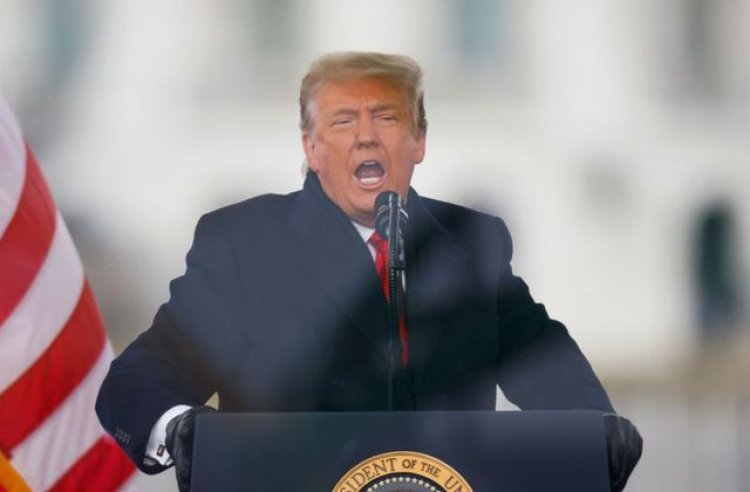Explained: The US Presidential Impeachment Process

By Samiksha Roy
House Speaker Nancy Pelosi and top congressional democrats called for impeachment and removal of US President Donald Trump on the charge of “incitement of insurrection” post the riot and violence in US capitol by the supporters of President Trump which left 1 police officer and four others dead. The impeachment comes post vice president Mike Pence refused to abide by the house resolution for the vice president and cabinet to invoke the 25th amendment to the American constitution which in simple terms says that if the president can’t remit his constitutional duties, then the vice-president takes over as the president of the United States. This is President Trump’s second impeachment proceeding as he faced a similar situation in the year 2019, where he was charged with “abuse of power” and “obstruction of Congress”, as he was alleged to have pressurised Ukraine on investigating then political opponent and now US president-elect Joe Biden’s son, Hunter Biden for seeking political gains against his rival in his bid to seek re-election for the office of President. The Senate acquitted President Trump on both the impeachment articles, as both the articles failed to achieve a two-thirds majority.
What is impeachment?
Many times, impeachment is confused with removing the US president from office. But in reality, it refers only to the House of Representatives, the lower chamber of Congress, bringing charges of “treason, bribery, and other high crimes and misdemeanours”. If the charges of impeachment are accepted by the senate with a two-third majority, then the penalties involved according to the American constitution are for the removal of President before the expiration of their term as president and further disqualification from holding any federal office in the future.
Aa of now, only three of the US presidents have been impeached which includes Andrew Johnson in 1868 and Bill Clinton in 1998 and Donald Trump in 2019, but all of them were later acquitted over the articles of impeachment and subsequently completed their terms in office. Richard Nixon resigned in 1974 over the “Watergate scandal” to avoid being impeached by the lawmakers. Donald Trump is the first president in the US history who is facing the second impeachment in his very first tenure, which is about to end soon when president-elect- Joe Biden takes the oath in January.
What is a “high crime”?
The phrase “High crimes” is mentioned in Section 4 of article 2 of the US Constitution, which is about the process of impeachment of President, Vice president and civil officers of the United States. It basically refers to the abuse of power by a public official vested with immense power. The term traces its origin to the British common law, where it was used to remove crown officials by the parliament. But, it is one of the most confusing phrases of the US Constitution as there is always a debate going on as to what makes up an indictable criminal behaviour and whether the phrase even requires a criminal behaviour or conduct.
What is the process of impeachment in the US?
The house judiciary committee first holds an investigation and recommend articles of impeachment to the House of Representatives. But the house representatives could set up a special panel to handle the proceedings of hold a floor vote on such articles with no committee going through them. If the article of impeachment or the charges gets a simple majority in the House of Representatives, which has 435 members, then the president is impeached, which is like being indicted. Thereafter, the proceedings move to the Senate, the upper chamber which holds a trial overseen by the chief justice of the US. According to the American constitution, if two-thirds of the majority finds the president to be guilty, then he has to be removed and the vice-president takes over the charge of the president. There is no further process of appeal.
As of now, democrats still holds an advantage in the House of representatives but the republicans gained some advantage in the recently held house elections and in the senate, democrats gained control after the Georgia runoffs. In normal times, the usual procedure would have been an elaborate impeachment enquiry by the House judiciary committee which would later send them to the full house and it often takes time, the last case having taken three months on the Ukraine issue but this time, it’s different as there is not much time and a general feeling among democrats is that there is no need for an extensive investigation since most members of the Congress heard Trump speaking to his supporters and were themselves present in the Capitol complex when the violence broke out. So, the house will vote on the article of impeachment which is “incitement to insurrection” and after the voting is completed to impeach, the articles and evidence will be sent to the Senate, where a trial will take place on whether to acquit or convict President Donald Trump. But constitutional experts in the US are divided over the possibility of having a senate trial after president trump’s ends.
Can Trump be barred from holding public office in future?
There is a considerable debate going on within the US law experts on whether the Senate can hold a trial against President Trump after his term as President of the United States ends but there is agreement on the fact that he can be barred from holding public office in future as reported by Reuters if he is convicted by the Senate on the article of impeachment. Only a simple majority of the Senate is needed to disqualify President Trump from holding future office if his impeachment trial goes beyond 20th January, his last day in office.
Samiksha Roy is a Research Assistant with Usanas Foundation


























